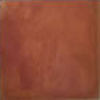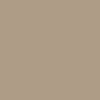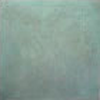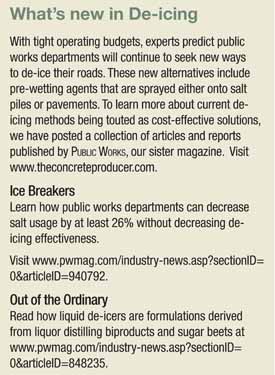Because concrete is used outdoors and is subjected to all types of weather conditions, we tend to think of it as a highly durable, almost indestructable material.
It is durable and can be very long-lasting if cared for properly.
Concrete should be given the care of gentle cleaning and protective sealing just as you would any valued furnishing inside your home.
It will scar, crack and discolor if abused.
Never use products on your concrete surfaces before checking with your local concrete specialist.
Here are a few “quick tips” on concrete care……….
Never use strong caustic soap, acid or other harsh materials to clean your new concrete.
Don’t allow snow and ice to accumulate on a slab during the first winter. Keep it cleaned off.
Avoid using deicing chemicals the first winter. A minimum of 3 months should be allowed for the concrete to air dry before using deicing chemicals.
Sand is safe to use and makes the surface skid resisant.
Under usual conditions, deicers that contain sodium chloride (common salt) or calcium chloride may be used after the first winer. We recommend applying a surface sealer in the fall prior to the first winter if possible.
Never use deicers containing ammonium sulfate or ammonium nitrate. They will rapidly disintegrate concrete.
……………………………………………………………..
Give existing concrete a “make over” with a decorative concrete overlay.
Transform your boring patio with the custom look of stone or brick pavers that is durable and structurally more stable than hand laid stone or brick.
Choose a finish and color that will compliment your property from hundreds of available concrete colors and numerous patterns.
Check out ourColor Charts on the left. You will be delighted with the vast selection of effects we can achieve. Here are just a few examples……

CS-500
Mahogany Brickform
Blush Tone
Acid Stain |

242
Sandstone
Solomon ColorFlo |

160
Brick Red
Davis Integral Colors
|

DSC
1155 Antique White
Solomon Dry Shake Color Hardener |

CR923
Silver
Solomon Color Release Agents |

CS-200 Turquoise
Brickform Blush Tone Acid Stain |
|
|
|
|
……………………………………………………………..
Proper Concrete Care
Some of the most important steps that can be taken to ensure long lasting durable and beautiful exterior concrete work are not the responsibility of Butch Bando Concrete, LLC, but are the responsibility of the Contractor and/or the Homeowners. These preventive steps include prevention of early or excessive traffic wear and stress, this includes both foot and vehicle, and proper weather and sealing maintenance.
Early/Excessive Traffic
The longer your concrete is in place, the stronger it becomes, from a compressive strength point of view. This is a relevant point because it helps to reinforce that the longer you stay off your new concrete the stronger it becomes. Since concrete under normal weather conditions requires 28 days, and longer as the weather gets colder, to reach the necessary compressive strength needed to properly perform its specific function, any premature abuse of the concrete can severely damage the work. As a result, do not drive or allow anyone else to drive any vehicles on your concrete during these first 28 days. Once our crews have left the job site it is in the hands of the Contractor/ Homeowners to ensure that foot and vehicle traffic is kept off of the concrete for as long as possible and that any unnecessary foot and vehicle traffic is avoided. For at least the first week, but not limited to, after concrete is poured the surface is extremely subjectable to marring. This marring can be caused by anything from trash caught by high winds to pets and humans or vehicle traffic. For at least the first 28 days, after your concrete is poured it is subjectable to damage such as stress fractures and finish delamination damage caused by heavy objects being stacked on it or driving over the newly poured concrete. Stress fractures may start out as very small hairline cracks but can and will only intensify over time do to traffic wear, weather, and freeze-thaw expansion and contraction. Finish delamination damage is when the finished surface of you concrete is broken away from its concrete aggregate base. While the surface may look fine on the outside, underneath the surface is a very fine crack just waiting to be driven over or filled up with water and salt causing the finished surface to pop off leaving an unsightly hole in the middle of you concrete work. Even when your concrete has cured for the proper amount of time, you should never exceed the weight that you concrete is designed to handle. While each thickness is designed to handle different weights, a good rule of thumb is on anything 4” (this is the common thickness of any residential work) no vehicle with more then one rear axle should be driven on it. These vehicles should be limited to nothing more than medium sized moving vehicles. If you have any questions as to the limits of your concrete, please feel free to contact us.
We understand that not all of these conditions can be monitored and/or adhered to 100% of the time needed to ensure proper concrete curing, so the following are a few suggestions we provide to make the process easier on you:
1) Barricade or caution tape the work site.
2) Post signs stating why the area is blocked off.
3) Cover the work with a protective layer of rosin paper.
Caution: If you cover the work improperly you can cause more damage then you were trying to prevent. You cannot cover the work until at least two weeks after the concrete is poured. Covering the work too soon can cause the product that you are covering it with to wick moisture from the concrete causing it to rapidly dehydrate and develop shrinkage cracks (similar to stress fractures). You must also cover any work exposed to the sun evenly. If you cover only certain areas, the uncovered areas will cure out much lighter than the areas that are covered. This is similar to the effects of removing a sticker from the paint of an older car. The areas of paint that were exposed to the sun are much more faded and bleached out.
4) Schedule any trades that must work on or around the concrete allowing enough time for your concrete to properly cure.
5) Make sure that no vehicles or materials above the rated weight limits of your concrete are allowed on your concrete.
Weather/ Sealing Maintenance
The most important maintenance procedure for any concrete, new or old, is weather and sealing related. Weather and weather related products can have negative effects on both the structural and cosmetic properties of concrete. The most harmful season for concrete is winter. When concrete is poured in conditions that require heating or covering before and/or after pouring, it is the responsibility of the Contractor/ Homeowners to ensure that whatever measures have been taken to help prevent the concrete or sub base from freezing remains in place until removed by Butch Bando Concrete, LLC. Any early removal of winter protection can result in freezing of the concrete and/or it’s sub base. Such freezing will weaken the structural integrity of the concrete resulting in severe cracking and/or surface spalling.
Properly sealing the surface of your exterior concrete WILL BE THE DIFFERENCE IN THE LIFE AND BEAUTY OF YOUR CONCRETE. Newly poured concrete must properly cure. Curing refers to liquids evaporating, or the drying of you concrete. Any improper interruption of this process can result in severe damage of the concrete. Similarly, excessive moisture being trapped in the concrete or over saturation of the concrete can cause just as many problems. The reason for mentioning this is to help explain why sealing, most importantly the first time, after a minimum of 28 days after the concrete has been poured, is so important. The best type of sealer available for concrete that endures the abuse of winter and products that are associated with winter such as salt, calcium chloride, and other harmful ice and snow removal techniques and products is an approved Butch Bando Concrete, LLC sealer. The reason salt guards work so well is because it penetrates into concrete making it extremely difficult for anything to get in or out of the concrete. This creates a huge problem when trying to seal concrete that has just been poured. A good penetrating sealer would not allow the concrete to cure properly and there are only a handful of penetrating cures that are designed for newly poured concrete most of which are still new and/or experimental. As a result, we have no other option but to use a cure and seal compound immediately after we pour our exterior work. Our cure and seal compound helps slow the evaporation process of the concrete without completely stopping it, ensuring your concrete properly cures. It does this by forming a thin membrane on top of the surface of the concrete which also acts as a protective sealer against harmful elements. While most cure and seal products claim to seal for 6 months to 1 year, their life span can be, and often is, shortened by excessive traffic and use. This is due to the thin membrane being worn down by friction. Once this membrane is gone, your concrete can and will absorb anything that comes into contact with it. This includes anything from salt water to rubber from your vehicle tires. If the concrete is not kept clean from harmful contaminates before it is sealed with a penetrating cure, irreversible damage can occur. Damage is usually a result of salt and/or calcium chloride from winter conditions penetrating into the concrete, which leads to mild and/or severe surface spalling.
NOTE: Just because you do not use salt or calcium chloride on your concrete it does not mean your concrete is not subject to salt and/or calcium chloride damage. If you drive on any public road with your vehicle you will pick it up and you will track it onto your concrete. Troweled garage floors will not be as affected by salt and/or calcium chloride damage as your decoratively finished outside concrete due to the differences in the poresness of the finishes and the fact that your interior concrete is exposed to a limited amount of freezing and thawing. (Your garage weather lips, however, will be just as affected as your outside work). Despite your garages limited exposure to exterior elements it must still be sealed following the same guidelines as used with all exterior work.
It is the sole responsibility of the Contractor and/or the Homeowners to properly seal all outside concrete work 28 days after it is poured and as needed. Generally concrete needs to be sealed at least once a year no matter what the product labels may express. The following are the proper steps to seal your concrete.
28 Day (First Seal)
PLEASE NOTE: This first seal does not apply to stamped, textured or exposed aggregate concrete that has been sealed by us with a decorative sealer for its first sealing. If you are unsure if your concrete has been sealed with a decorative sealer please contact us to find out.
1) Wash off concrete with low-pressure power washer or a garden hose and a broom to remove any contaminants or stains.
Note: Whatever method you use to clean your concrete be sure to be gentle with it. The fresh concrete will be easily damaged by excessive direct pressure from a power washer or by too hard of scrubbing by a broom. If there are stains too severe to remove with these methods we suggest that you contact us to obtain the correct cleaner to perform the specific task.
2) Let concrete dry completely, this includes all the control and expansion joints as well.
3) Apply a quality penetrating salt guard sealer with either a sprayer or a roller (either method will do).
Note: : Not all sealers are of the same quality. Butch Bando Concrete, LLC requires a Butch Bando Concrete, LLC approved penetrating sealer. Butch Bando Concrete, LLC prohibits obtaining the sealer from a home supply store. Do not let sealer come in contact with anything but the concrete. If it does come into contact with you or any other part of your property it could permanently discolor or harm what it touches.
4) Let the sealer dry for at least 24 hours before walking or driving on the concrete.
Annual Sealing
PLEASE NOTE: If you are resealing stamped, textured or exposed aggregate concrete work you may follow all of the same steps to prepare the surface for sealing. You most likely, however, will want to use a decorative sealer in place of a salt guard in order to achieve the desired colorful luster, or the “Wet surface” look that the work originally had when it was new. If decorative concrete is let go too long without the proper sealing irreversible damage can be done to the colors and luster of the work. Also, if you seal your own stamped, textured or exposed aggregate concrete YOU MUST use an anti-slip admixture to provide much needed anti-slip protection that is not required when sealing regular exterior concrete. The admixture does not come with any decorative sealers and must be mixed in manually. For information on how to obtain the admixture please contact Butch Bando Concrete, LLC.
1) Wash concrete with a high-pressure power washer removing any contaminants and/or loose pieces of finished surface.
Note: If there is any spalling or pitting of your concrete you must power wash and remove the loose pieces of finished surface no matter how much comes free. It is better to remove the entire affected area now so that the sealer will work properly. Sealer cannot help save the loose pieces. If the loose pieces are sealed over, as they come off, a new area will be exposed with no sealer leaving it open to harm.
2) Let concrete dry completely, this includes all the control and expansion joints as well.
3) Apply the Butch Bando Concrete, LLC approved penetrating sealer with either a sprayer or a roller (either method will do).
Note: Not all sealers are of the same quality. Butch Bando Concrete, LLC requires a Butch Bando Concrete, LLC approved penetrating sealer. Butch Bando Concrete, Inc. prohibits obtaining the sealer from a home supply store. Do not let sealer come in contact with anything but the concrete. If it does come into contact with you or any other part of your property it could permanently discolor or harm what it touches.
4) Let the sealer dry for at least 24 hours before walking or driving on the concrete.
How Do De-icing Materials Affect Concrete?
{QUESTION} We are a producer in the Midwest. Last spring we received several calls about scaling on concrete driveways and parking lots. We had been very diligent in monitoring our mix designs and delivery procedures, so this spike in complaints surprised us. More interesting, several calls came from owners whose concrete surface had been in use for several years, and had performed well before last winter.
Something seemed out of the ordinary. It all came together when we received a call from an engineer in our local public works department. They also had been experiencing an unusual amount of scaling on much of their concrete pavement. He provided us some interesting information. Its transportation department recently bought a different type of de-icing material to replace the normal rock salt used in the past.
Does the type of de-icing material affect concrete’s durability? And if there is a difference between de-icing materials, how can we advise public works departments, contractors, and clients to help better protect concrete surfaces?
{ANSWER} The type of de-icing material does affect the chemistry of a hardened concrete surface. In a recently published paper, University of Kansas researchers provided some interesting insights. In ‘Effects of Deicers on Concrete Deterioration’, David Darwin, JoAnn Browning, Lein Gong, and Sean Hughes compared how concrete samples reacted when exposed to four of the most widely used de-icing chemicals.
The research team, supported by the Structural Engineering and Materials Laboratory at the University of Kansas, subjected the specimens to weekly southern exposure-type cycles of wetting and drying. In addition to a control sample placed in distilled water, samples were immersed in solutions of sodium chloride (NaCl), calcium chloride (CaCl2), magnesium chloride (MgCl2) and calcium magnesium acetate (CMA).
Samples were tested for periods up to 95 weeks. Researchers evaluated the samples based on changes in the dynamic modulus of elasticity and appearance.
The researchers concluded that applying significant quantities of CaCl2, MgCl2, and CMA over the pavement’s life will negatively impact the concrete’s long-term durability. But there was a difference:
- at lower concentrations, NaCl and CaCl2 have a relatively small negative impact;
- at high concentrations, NaCl has a greater but still relatively small negative effect;
- at low concentrations, MgCl2 and CMA can cause measurable damage to concrete;
- at high concentrations, CaCl2, MgCl2, and CMA can cause significant changes in concrete that result in loss of material and reduced stiffness and strength.
Perhaps your best source for help in mitigating the problems from de-icing material is provided in the ACI 201.2 ‘Guide to Durable Concrete’, which describes specific types of concrete deterioration. It includes chapters that discuss the mechanisms involved in lessening a concrete’s service life and provides recommendations for individual components of concrete, quality considerations for concrete mixtures, construction procedures, and influences of the exposure environment.
These are all important considerations to ensure concrete durability. Unfortunately, the current ACI document does not address the effects of MgCl2 or CMA on hardened concrete.
To review the report by the University of Kansas researchers, visit www.iri.ku.edu.

- Article reference: The Concrete Producer
 |
|
 |
|
| Specimens subjected to temperature cycles and wet-dry cycles in 1.06 molal ion concentration NaCl and CaCl2solutions (Fig. 1 and 2, respectively) show few signs of damage. The only apparent change is a slight discoloration of the CaCl2specimens (Fig. 2). |
|
|
 |
|
 |
|
| Specimens subjected to MgCl2and CMA solutions exhibited signs of damage, as shown in Fig. 3 and 4, respectively. The MgCl2specimens (Fig. 3) were subjected to wet-dry cycles for 80 weeks, after which the test was terminated because the modulus of elasticity had dropped below 90% of its initial value. The CMA specimen (Fig. 4) completed 95 weeks of wet-dry cycling. |
|
|
|
 |
|
 |
|
| The specimens subjected to 6.04 molal ion concentration CaCl2and MgCl2solutions (Fig. 5 and 6) had the most damage, with a loss of material from the ends and edges of the specimens and some delamination. The damage appears to be the result of both physical damage due to crystal formation in the concrete pores and chemical changes in the cement paste. |
|
|
 |
|
|
| The specimens subjected to the 6.04 molal ion concentration CMA solution (Fig. 7) exhibited a uniform loss of material on all exposed surfaces, a change that appears to result primarily from chemical changes in the cement paste. |
|
|